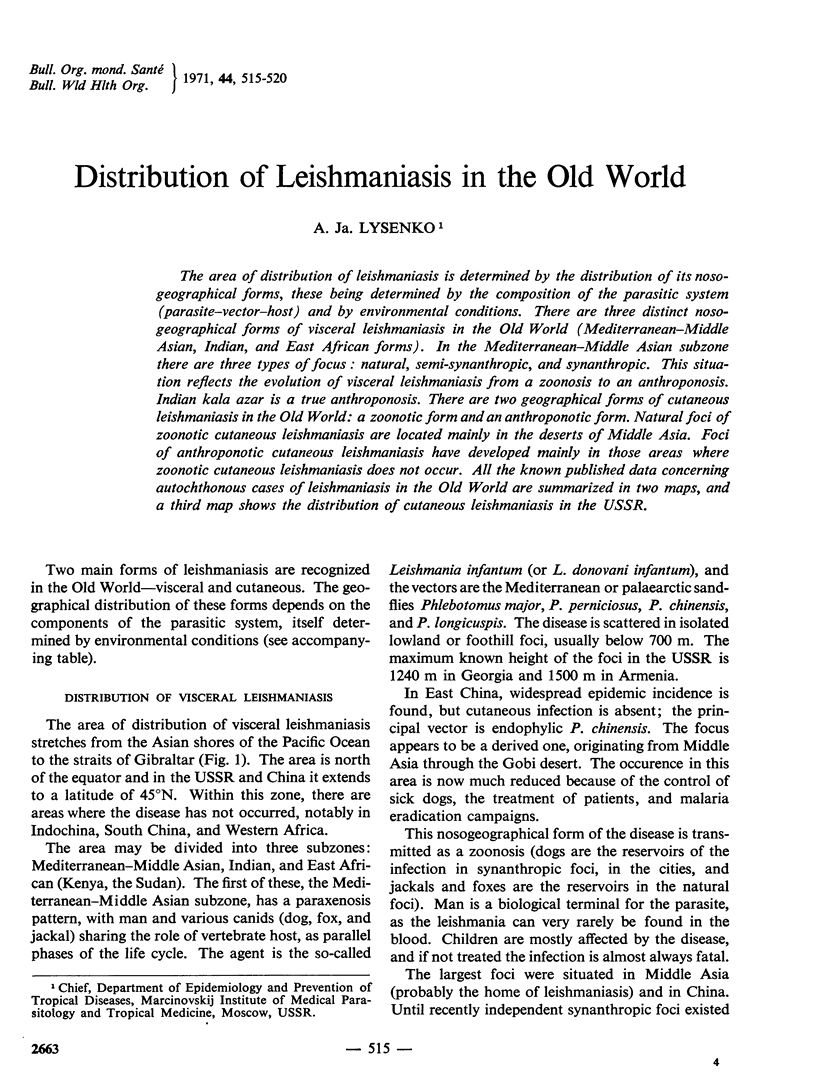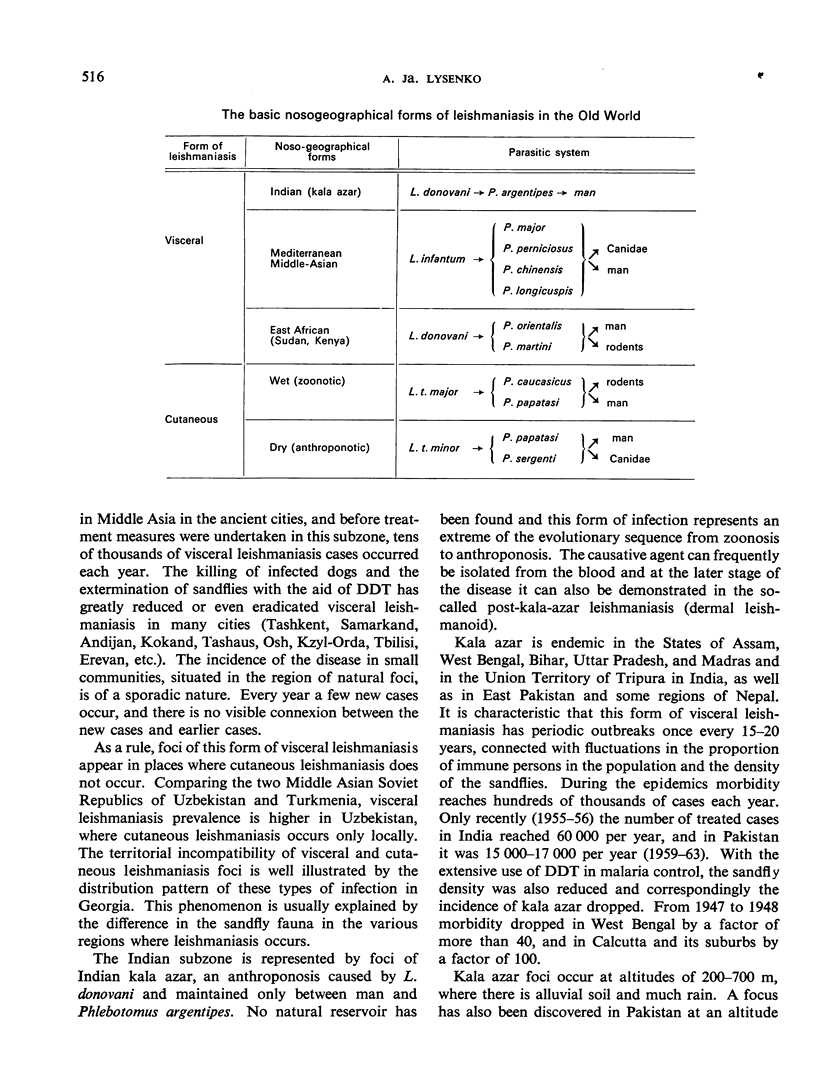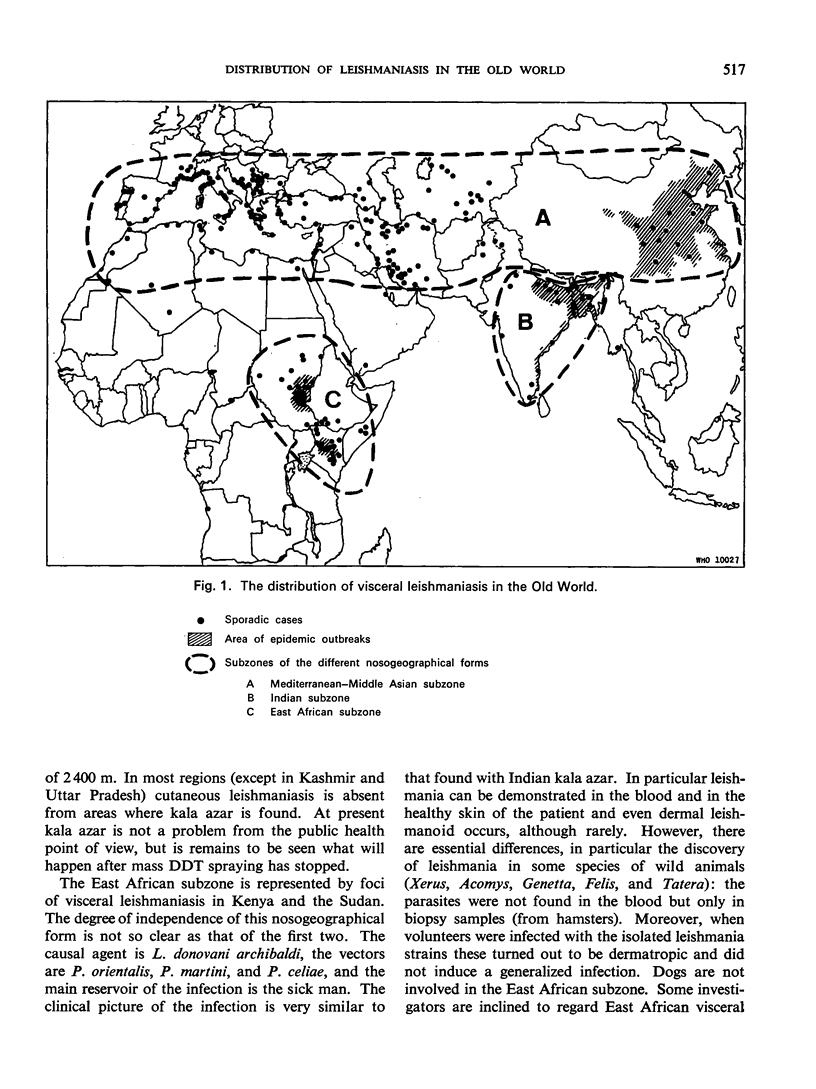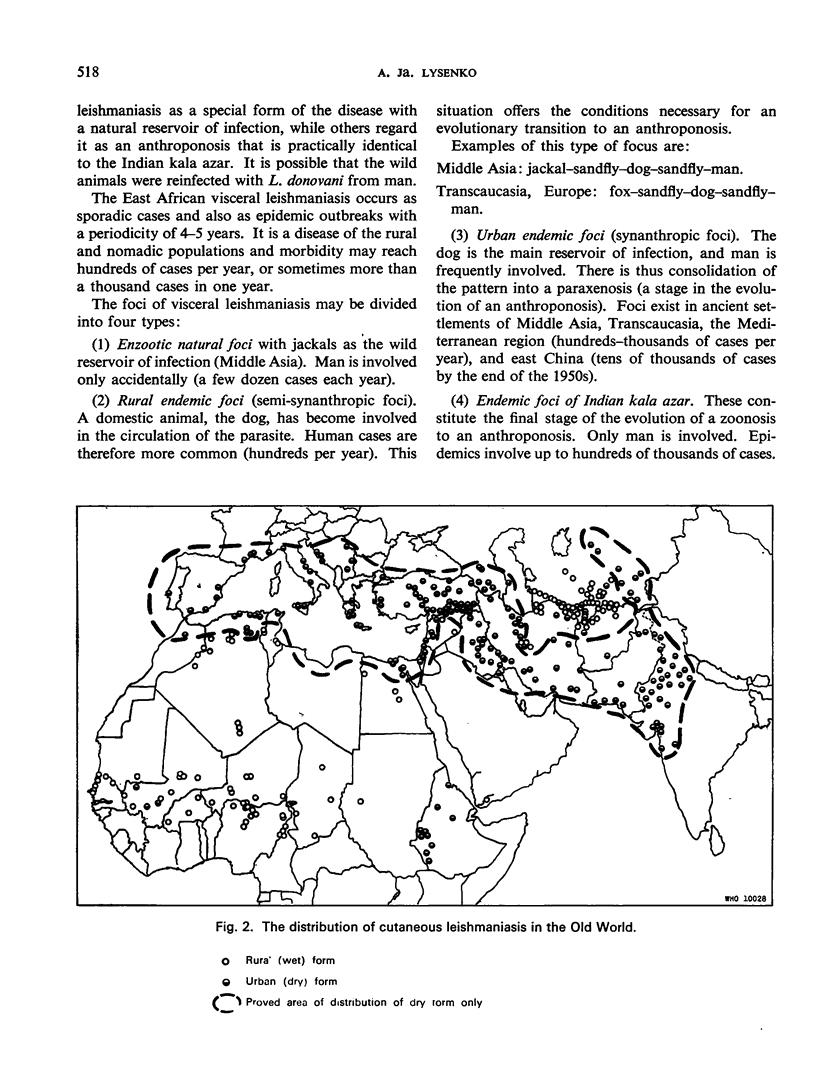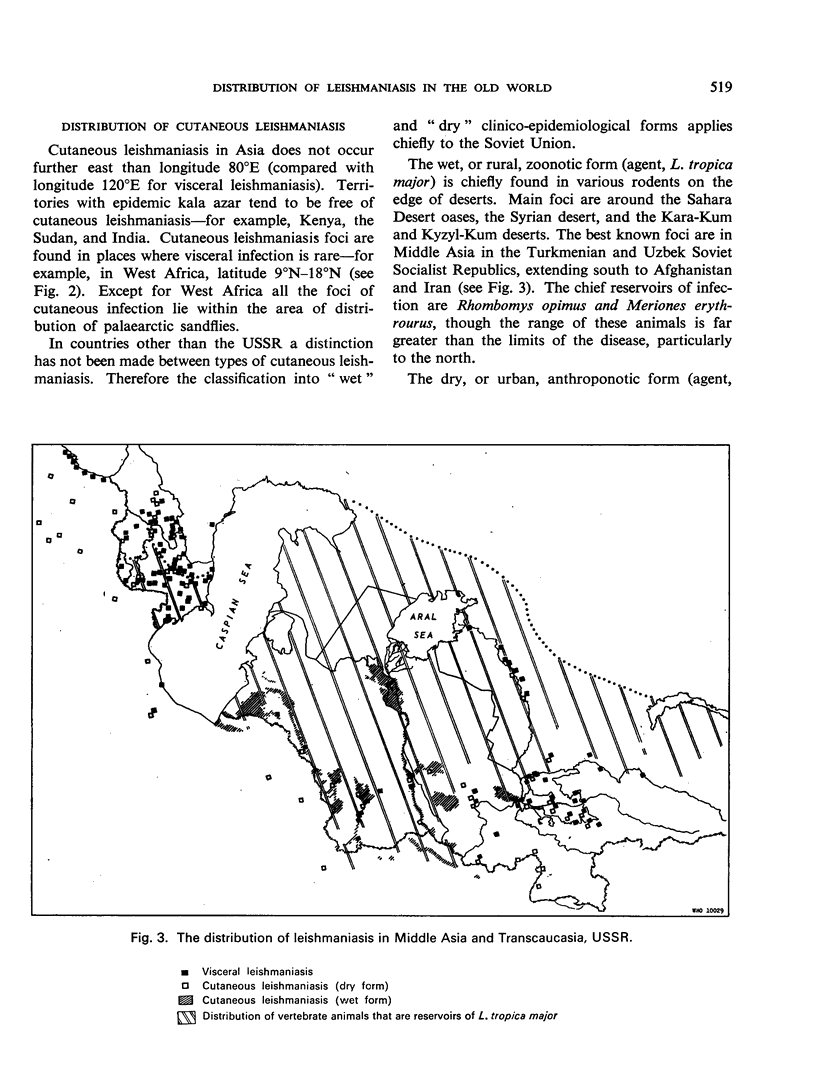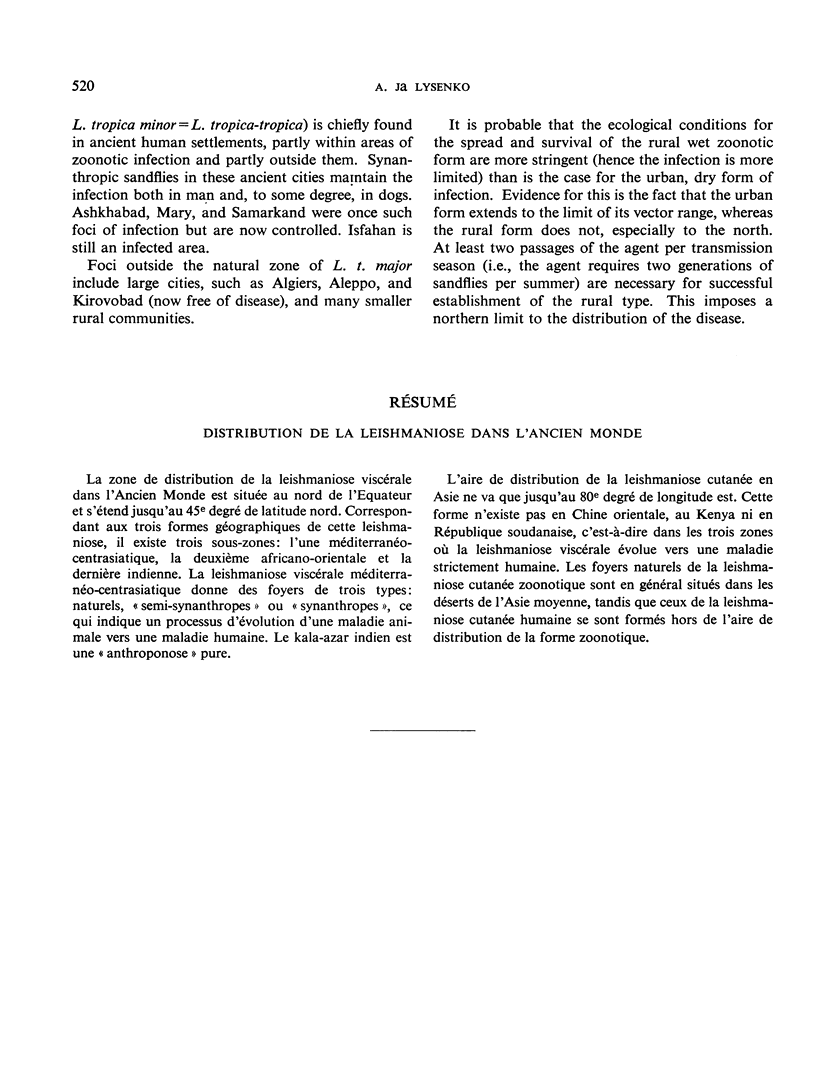Abstract
The area of distribution of leishmaniasis is determined by the distribution of its nosogeographical forms, these being determined by the composition of the parasitic system (parasite—vector—host) and by environmental conditions. There are three distinct nosogeographical forms of visceral leishmaniasis in the Old World (Mediterranean—Middle Asian, Indian, and East African forms). In the Mediterranean—Middle Asian subzone there are three types of focus: natural, semi-synanthropic, and synanthropic. This situation reflects the evolution of visceral leishmaniasis from a zoonosis to an anthroponosis. Indian kala azar is a true anthroponosis. There are two geographical forms of cutaneous leishmaniasis in the Old World: a zoonotic form and an anthroponotic form. Natural foci of zoonotic cutaneous leishmaniasis are located mainly in the deserts of Middle Asia. Foci of anthroponotic cutaneous leishmaniasis have developed mainly in those areas where zoonotic cutaneous leishmaniasis does not occur. All the known published data concerning autochthonous cases of leishmaniasis in the Old World are summarized in two maps, and a third map shows the distribution of cutaneous leishmaniasis in the USSR.
Full text
PDF